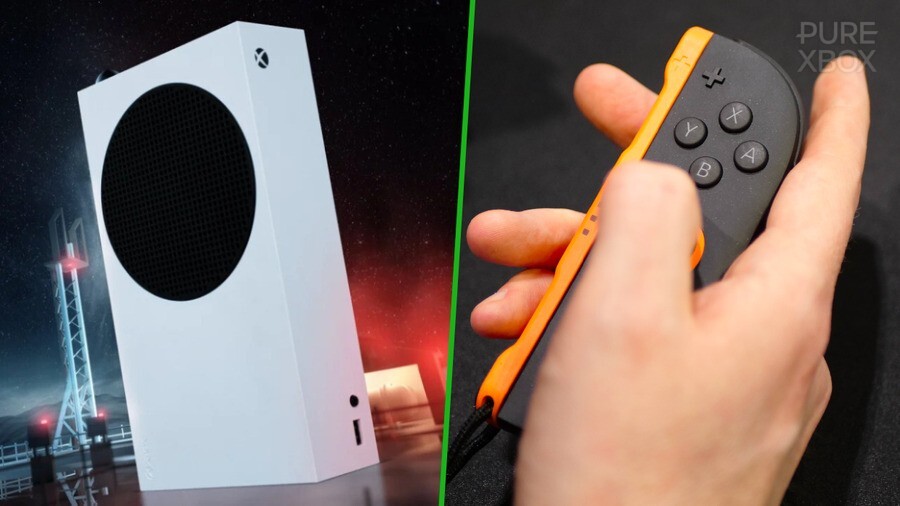
The big news of today concerns the Nintendo Switch 2 and Digital Foundry's reveal of the key tech specs for the console ahead of its launch in June, so we thought we'd take this opportunity to compare the Switch 2 alongside the Xbox Series X and Xbox Series S.
It's not a fair fight, of course, and Nintendo isn't trying to win any battles in this area, but it's still just interesting to look at how all the consoles stack up alongside each other. The Switch 2 is certainly looking and sounding like a very competent system, certainly when compared to its aging predecessor that released back in 2017.
Now, some of the comparisons aren't really like-for-like here, so we're doing the best we can with the information we can find (note that we are definitely not tech experts!), but here's what we've been able to put together so far. Many thanks to Digital Foundry for providing the vast majority of this information in the first place.
Firstly, let's start with both the Nintendo Switch 2 and the original Switch:
| Switch 2: Nvidia T239 | Switch 1: Nvidia Tegra X1 | |
|---|---|---|
| CPU Architecture | 8x ARM Cortex A78C | 4x ARM Cortex A57 |
| CPU Clocks | 998MHz (docked), 1101MHz (handheld), Max 1.7GHz | 1020 MHz (docked/handheld), Max 1.785GHz |
| CPU System Reservation | 2 cores (6 available to developers) | 1 core (3 available to developers) |
| GPU Architecture | Ampere | Maxwell |
| CUDA Cores | 1536 | 256 |
| GPU Clocks | 1007MHz (docked), 561MHz (handheld), Max 1.4GHz | 768MHz (docked), up to 460MHz (handheld), Max 921MHz |
| Memory | 128-bit/LPDDR5 | 64-bit/LPDDR4 |
| Memory Bandwidth | 102GB/s (docked), 68GB/s (handheld) | 25.6GB/s (docked), 21.3GB/s (handheld) |
| Memory System Reservation | 3GB (9GB available for games) | 0.8GB (3.2GB available for games) |
| Internal Storage | 256GB UFS | 32GB UFS |
| Resolution / FPS | Max 4K / 60FPS (docked) or 1440p / 120FPS (docked & handheld) | Max 1080, 60FPS |
And now, here's how both the Xbox Series X and Xbox Series S stack up to the Switch 2:
| Xbox Series X | Xbox Series S | |
|---|---|---|
| CPU | Eight-core AMD Zen 2 | Eight-core AMD Zen 2 |
| CPU Clocks | 3.8GHz/3.6GHz (SMT on) | 3.6GHz/3.4GHz (SMT on) |
| GPU | AMD RDNA 2 | AMD RDNA 2 |
| CUs | 52 | 20 |
| GPU Clocks | 1.825GHz (12.2TF) | 1.565GHz (4TF) |
| Memory | GDDR6 | GDDR6 |
| Memory Bandwidth | 10GB at 560GB/s, 6GB at 336GB/s | 244GB/s |
| Memory System Reservation | 2.5GB (13.5GB available for games) | 2GB (8GB available for games) |
| Internal Storage | 1TB SSD | 512GB SSD |
| Resolution / FPS | Max 4K / 120FPS | Max 4K / 120FPS |
To be honest, we're probably more interested in how the upcoming Xbox handheld will fare when compared against the Nintendo Switch 2, as plenty of potential buyers will need to decide between the two over the coming months.
The Switch 2 feels like it's going to be much more of a third-party powerhouse this time around as well, which means the Xbox handheld will need to offer some pretty big advantages to convince a lot of the more casual fans.
Anyway, we'll let you know about the Xbox handheld stuff when that comes out, but one other thing to note about the Switch 2 - Digital Foundry says that the new Game Chat feature has "a significant impact on system resources" that appears to be "an area of developer concern". This absolutely reminds us of the old Xbox "Snap Mode" feature from the Xbox One era, which eventually ended up getting removed due to hogging too many resources.
Will Game Chat - a feature where you can talk to friends and watch their live gameplay - suffer the same fate in years to come? Who knows, but it'll be interesting to see whether it becomes detrimental to the experience like Snap Mode did.